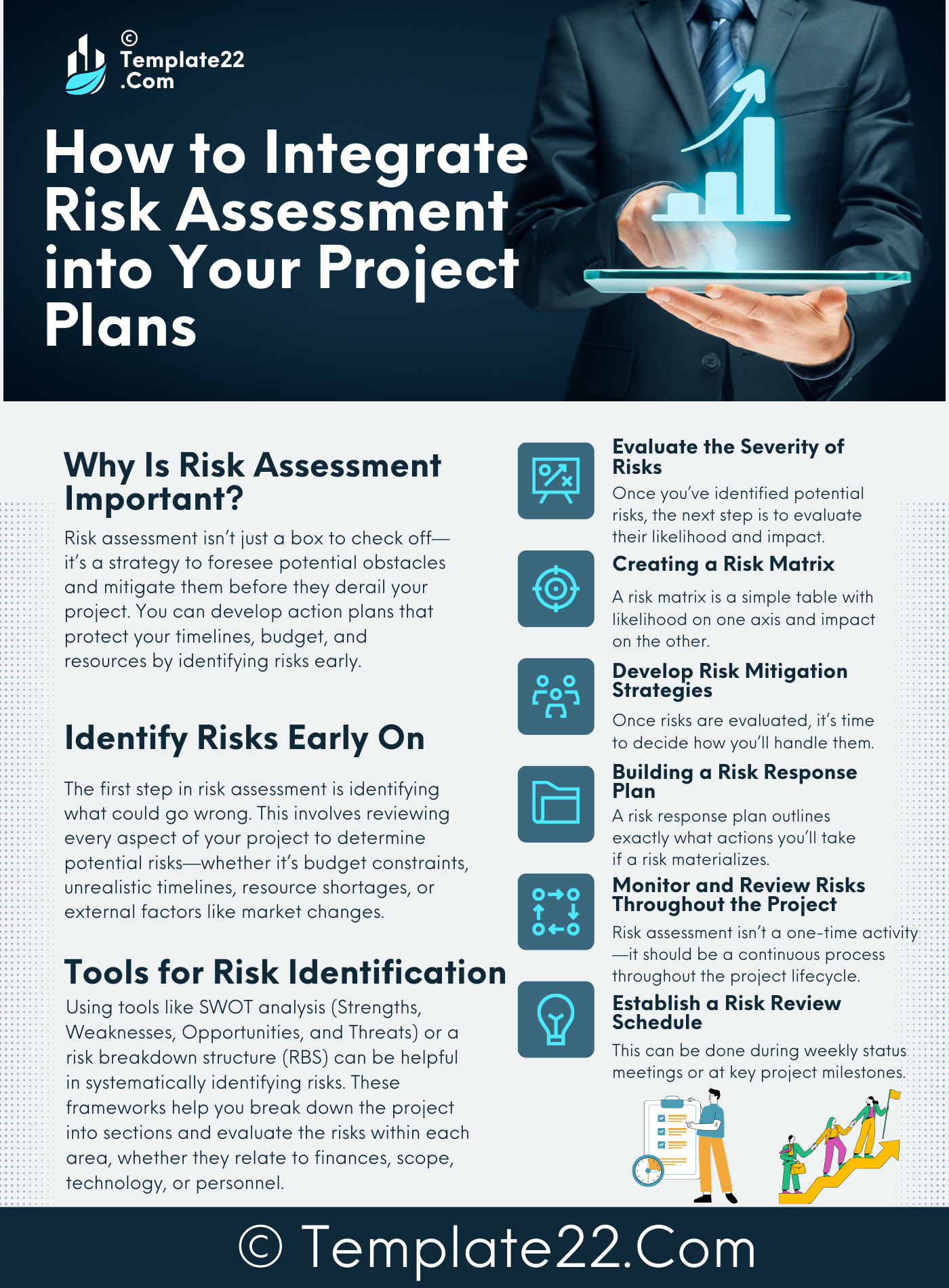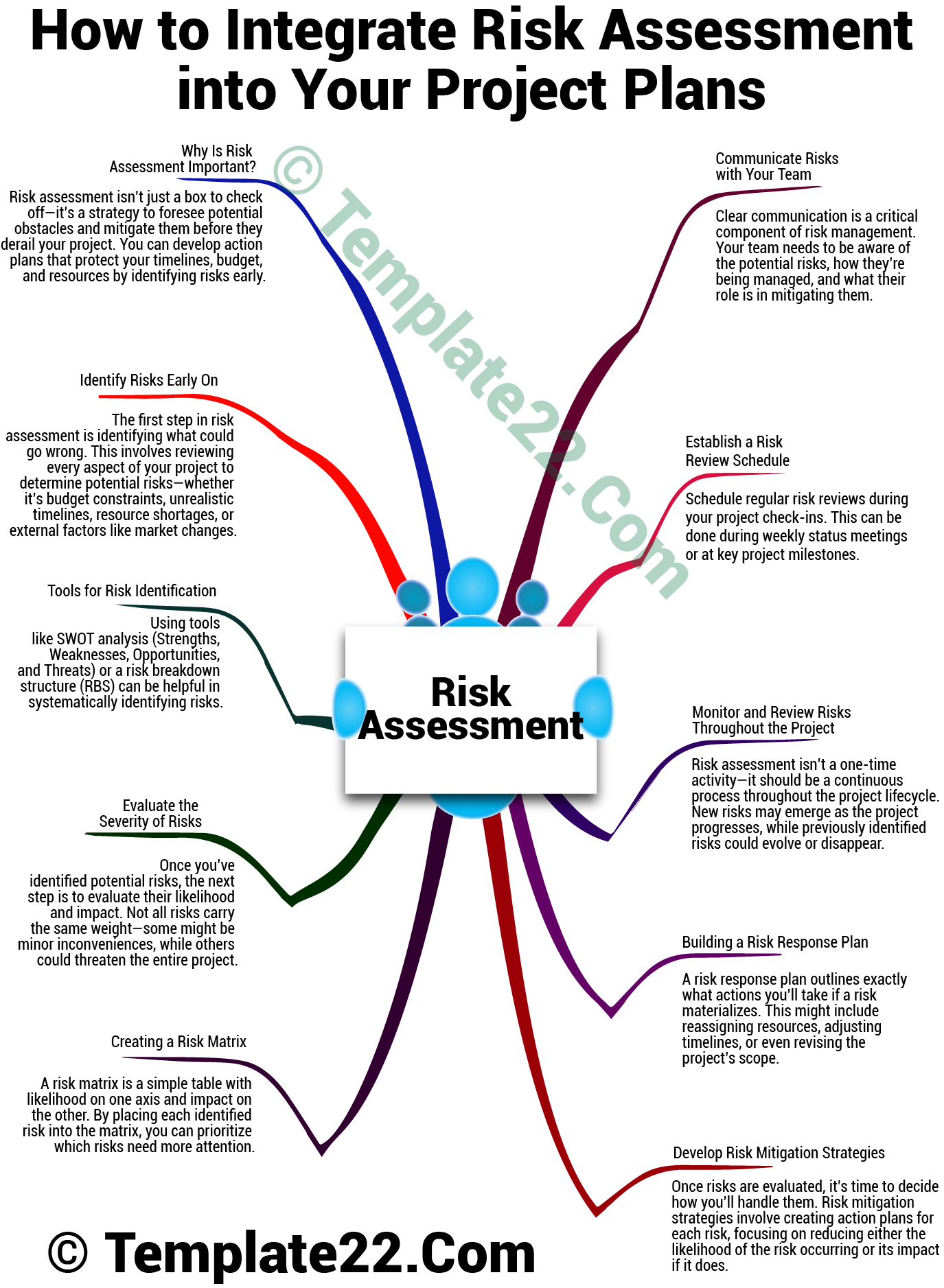 In project management, risk is an inevitable factor. It doesn’t matter how detailed your project plan is—risks will always exist. Project Risk Assessment Integration is crucial for success. It’s about avoiding disasters and improving decision-making, optimizing resources, and setting realistic goals.
In project management, risk is an inevitable factor. It doesn’t matter how detailed your project plan is—risks will always exist. Project Risk Assessment Integration is crucial for success. It’s about avoiding disasters and improving decision-making, optimizing resources, and setting realistic goals.
Let’s explore how you can seamlessly embed risk assessment into your project planning process.
Why Is Risk Assessment Important?
Risk assessment isn’t just a box to check off—it’s a strategy to foresee potential obstacles and mitigate them before they derail your project. You can develop action plans that protect your timelines, budget, and resources by identifying risks early.
For instance, if your project involves new technology, a risk assessment can help you anticipate potential technical issues. Understanding these risks allows you to plan alternatives or buffer time to resolve any hiccups, ensuring that your project runs as smoothly as possible.
Step 1: Identify Risks Early On
The first step in risk assessment is identifying what could go wrong. This involves reviewing every aspect of your project to determine potential risks—whether it’s budget constraints, unrealistic timelines, resource shortages, or external factors like market changes.
You can gather insights by brainstorming with your team, consulting past project data, or using risk assessment frameworks. A collaborative approach ensures that you capture as many potential risks as possible, improving your project’s resilience.
Tools for Risk Identification
Using tools like SWOT analysis (Strengths, Weaknesses, Opportunities, and Threats) or a risk breakdown structure (RBS) can be helpful in systematically identifying risks. These frameworks help you break down the project into sections and evaluate the risks within each area, whether they relate to finances, scope, technology, or personnel.
CLICK HERE TO DOWNLOAD 300+ PROJECT MANAGEMENT TEMPLATES & DOCUMENTS IN EXCEL
Step 2: Evaluate the Severity of Risks
Once you’ve identified potential risks, the next step is to evaluate their likelihood and impact. Not all risks carry the same weight—some might be minor inconveniences, while others could threaten the entire project.
This is where you need to classify risks by both probability (how likely they are to occur) and impact (how much damage they can cause). A risk matrix, a visual tool that helps you plot risks based on these two factors, can be incredibly helpful in this process.
Creating a Risk Matrix
A risk matrix is a simple table with likelihood on one axis and impact on the other. By incorporating Project Risk Assessment Integration, you can place each identified risk into the matrix and prioritize which risks need more attention. High-likelihood, high-impact risks should be addressed immediately, while low-likelihood, low-impact risks can be monitored or mitigated with less urgency.

Step 3: Develop Risk Mitigation Strategies
Once risks are evaluated, it’s time to decide how you’ll handle them. Risk mitigation strategies involve creating action plans for each risk, focusing on reducing either the likelihood of the risk occurring or its impact if it does.
Common strategies include:
- Avoidance: Changing aspects of the project to eliminate the risk.
- Reduction: Taking steps to minimize the risk’s likelihood or impact.
- Transfer: Shifting the risk to a third party, such as outsourcing tasks or purchasing insurance.
- Acceptance: Acknowledging the risk and creating contingency plans in case it occurs.
Building a Risk Response Plan
A risk response plan outlines exactly what actions you’ll take if a risk materializes. This might include reassigning resources, adjusting timelines, or even revising the project’s scope. Having a clear response plan ensures that your team knows what to do under various scenarios, reducing panic and improving decision-making.
Step 4: Monitor and Review Risks Throughout the Project
Risk assessment isn’t a one-time activity—it should be a continuous process throughout the project lifecycle. New risks may emerge as the project progresses, while previously identified risks could evolve or disappear. That’s why regular risk monitoring is essential.
Establish a Risk Review Schedule
Schedule regular risk reviews during your project check-ins. This can be done during weekly status meetings or at key project milestones. Use these reviews to update the risk matrix, evaluate whether existing mitigation strategies are working, and decide if new risks need to be addressed.
Step 5: Communicate Risks with Your Team
Clear communication is a critical component of risk management. Your team needs to be aware of the potential risks, how they’re being managed, and what their role is in mitigating them. Open discussions about risk not only improve transparency but also empower team members to raise concerns or identify additional risks you may have overlooked.
Use Risk Logs to Keep Everyone Updated
One way to facilitate communication is by using a risk log—a document that tracks identified risks, their status, and the mitigation actions being taken. Sharing this document with your team ensures everyone is aligned and understands the project’s risk landscape.
CLICK HERE TO DOWNLOAD 300+ PROJECT MANAGEMENT TEMPLATES & DOCUMENTS IN EXCEL
Conclusion: Make Risk Assessment Part of Your Planning DNA
Project Risk Assessment Integration isn’t a luxury—it’s a necessity for long-term success. By proactively identifying, evaluating, and managing risks, you position your project to navigate challenges with confidence.
As risks are a natural part of any project, the key is to have a robust plan in place so that when challenges arise, your team is prepared to handle them effectively. Make risk assessment a core part of your planning process, and you’ll not only mitigate potential issues but also enhance your project’s overall success.
